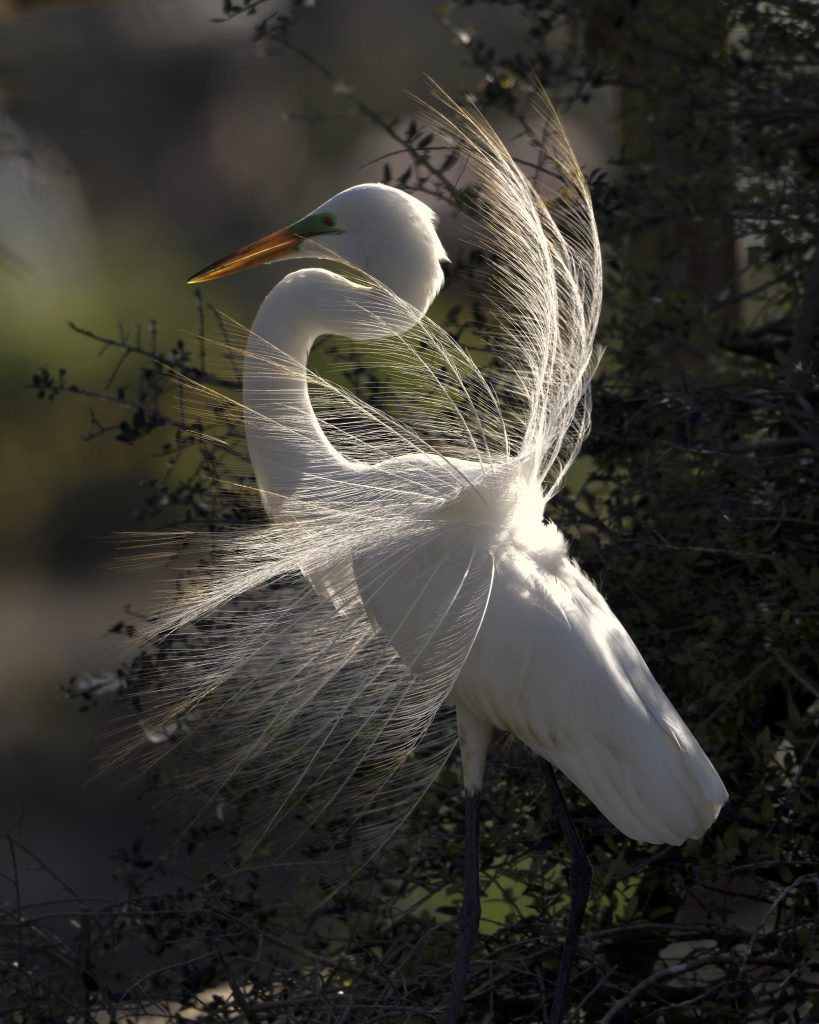Boy Scout Woods, Smith Oaks, The Rookery, and more!
From under an ancient sea, a salt dome emerged. After a few thousand years the dome reached 38-feet above a pancake-flat coastal plain; the highest point-of-land on the immediate coast from Mobile Bay to the Yucatan Peninsula. This is High Island, which is now a wooded beacon amongst the coastal marshland providing food, water, and places to rest for weary Gulf migrants. The daily afternoon arrival of neotropic migrants often includes dozens of species, along with local and resident waterfowl, raptors, seabirds, shorebirds, and passerines. Weather fronts in April and May can easily produce over 100 species (including 30+ species of warblers) in a single day! One of High Island’s best features is a man-made reservoir: Clay Bottom Pond. Colonial waterbirds- who prefer islands for nesting to deter mammalian predators- found the U-shaped Island in the middle the pond perfect for a rookery. Nine species of heron, egret, spoonbill, ibis, cormorant, and Anhinga nest within inches of each other, offering birders a close view of the annual dramedy of waterbird nesting activity including vibrant breeding plumage, mating hustle and nestlings.
A community of Texas birders of the Houston Audubon Society (HAS) created two large sanctuaries in the area – Boy Scout Woods and Smith Oaks. In time, High Island’s beacon also pulled in birders from around the world for a few weeks each year. One of the best features is a man-made reservoir, Clay Bottom Pond. Colonial waterbirds, who prefer islands for nesting to deter mammalian predators, found the U-shaped Island in the middle the pond perfect for a rookery. Nine species of heron, egret, spoonbill, ibis, cormorant, and Anhinga nest within inches of each other. The High Island rookery offers birders a close view of the annual dramedy of waterbird nesting activity including vibrant breeding plumage, mating hustle and nestlings. Read more about High Island on the Houston Audubon website.
We visit three HAS and Texas Ornithological Society (TOS) sites at High Island. Expect the annual arrival of dozens of neotropic migrants along with local and resident waterfowl, raptors, seabirds, shorebirds, and passerines. April weather fronts can produce 30 or more species of songbirds in a single day!
Heading back down the Bolivar Peninsula’s Hwy 87 we return to Galveston. Time permitting, there may be stops along the way. The peninsula holds habitat zones that drift between brackish and briny depending on the tides. These habitats serve as the hatcheries for many species of saltwater fish. Fresh water is available on Bolivar too. Between Bolivar’s shores lie patches of coastal prairie grasses, willow and mangrove that surround rain charged ponds. This attracts dozens of interesting waterfowl, herons, egrets, marsh, and shore birds. Trips are led by local skilled birders with many years of migration birding experience.
Bring: water, lunch, sunscreen, bug spray


